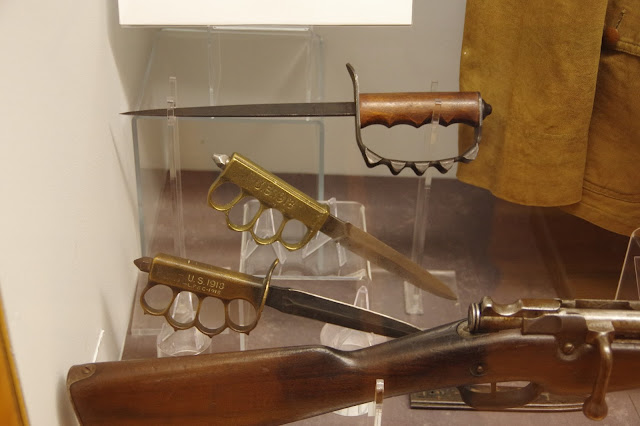Display dedicated to George Ostron, who was an accomplished armature illustrator and who won a contest to design what became the unit insignia. A post on this topic is coming up on Lex Anteinternet.

Ostrom illstration of a New Mexican town. He had served with the National Guard in the Punitive Expedition.

Very nice example of National Guard collar insignia from this period in the upper left, and a subdued chevron on the right. Subdued chevrons would be a feature of the uniform all the way into the early Vietnam War but rank structure for enlisted men constantly changed. This insignia hearkens back to the 19th Century with its bugler specialty device and would pass into history before World War Two.
Early in World War One the push for recruitment was with the Navy over the Army and in the opening weeks of the war it was assumed that the Navy would be taking the primary role in the fight with the Army doing relatively little. Many Wyomingites, in the first rush towards the flag, joined the Navy accordingly.
Fred Kislter's name is associated with Kistler Tent & Awning, an early Casper business that's still in operation today.
French carbine and Adrien helmet, as used by some US African American soldiers assigned to French command.
Trench knives.
Telephone switchboard. World War One came at the beginning of a revolution in communications that would soon change that area completely.
A display dedicated to nurses in the Great War.
While its very much contrary to what is commonly believed, women played a role in World War One's home front work place that was as great as that which they'd later play in World War Two. It's just largely forgotten.
German equipment, including a machine gun, brought back to the US as souveniers.
The legendarily bad Chauchat automatic rifle that was used by the US, as supplied by the French, for a light machine gun during World War One.
Somewhat bizarre veterans' organization outfit.
The Red Cross played a very large role in World War One support.


































No comments:
Post a Comment